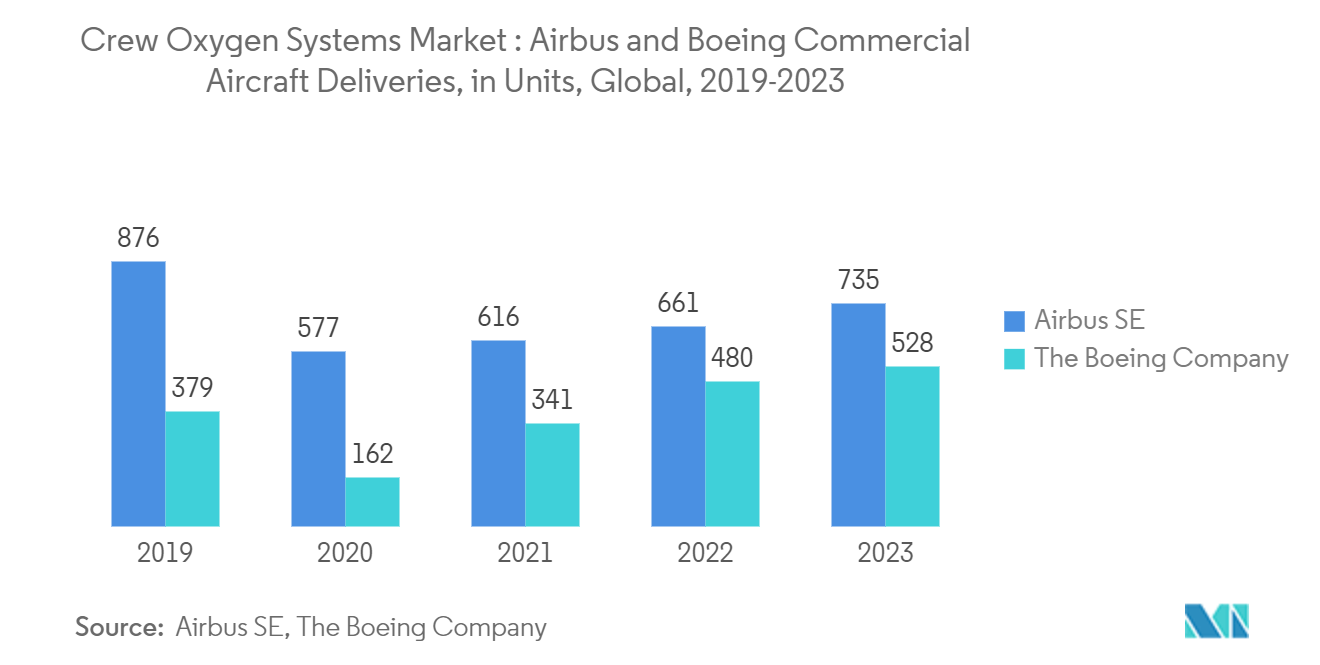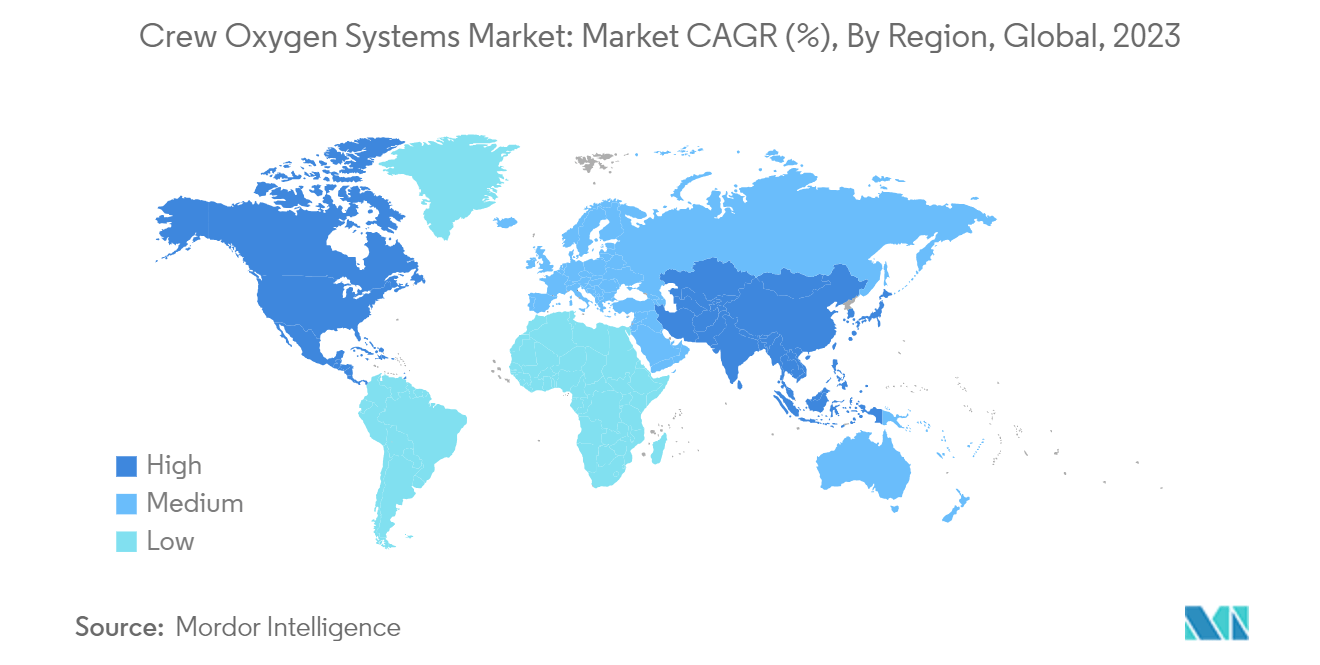Market Trends of Crew Oxygen Systems Industry
Oxygen Storage Systems Dominates the Market During the Forecast Period
- Oxygen storage systems are designed to store or generate a supply of pure oxygen and to regulate, dilute as required, and then distribute that oxygen to crew or passengers. Depending upon the type and the role of the aircraft concerned, an oxygen system may be used for normal operations, to provide supplemental oxygen for specific situations, or to provide emergency oxygen in the event of smoke, fire, fumes, or loss of pressurization.
- Regulations for the provision and use of supplemental or emergency oxygen systems are based on the guidance provided by the International Civil Aviation Organization (ICAO) Standards and Recommended Practices (SARPS). The regulations differentiate between pressurized and non-pressurized aircraft and then provide specific requirements based on the altitude at which the flight is to be conducted. For instance, in June 2022, Diehl Aviation built its own emergency oxygen supply generator for onboard passenger aircraft.
- Furthermore, in 2023, in total, Boeing and Airbus delivered 528 and 735 aircraft compared to 480 and 663, respectively, in 2022. The official A320 production rate is 45 aircraft per month and has remained at this level since the end of 2021. On average, the company delivered 48 A320s per month in 2023 compared to 43 in 2022. Thus, an increase in aircraft deliveries will create the market to propel during the forecast period.

North America Holds Highest Shares in the Market During the Forecast Period
- North America holds the highest shares in the crew oxygen systems market, owing to the high demand for air travel in the US, large fleet size, and significant investments in defense spending. The US Department of Transportation (DoT) announced that the air passenger traffic number in 2022 crossed around 854 million. Boeing is among the leading aircraft suppliers in the United States and is responsible for creating significant demand for crew-related oxygen systems. The US airline industry is facing a challenge with the pilot shortage. However, this presents an opportunity for growth and development in the aviation sector. The high demand for travel in the US has created a need for more pilots. Whenever new orders for aircraft are placed, the corresponding demand for oxygen systems is also generated.
- A total of 1500+ new passenger aircraft were delivered in the United States between 2017 and 2022, and a further 2000+ new jets are expected to be delivered to the region during 2023-2029. Carleton Technologies Inc., Collins Aerospace, and Safran Aerosystems were major suppliers of oxygen systems in the United States for Boeing B737 and B787 aircraft. The United States accounted for 80% of the total air passenger traffic in North America in 2022. Therefore, the United States is expected to generate the highest demand for new aircraft deliveries compared to other North American countries over the forecast period. Airlines are looking to expand their fleet size to cater to the growing demand for air travel, which may generate significant demand for crew oxygen systems.
- Furthermore, in the general aviation sector, original equipment manufacturers (OEMs) have emphasized on innovation and launched new products. For instance, in 2023, Aerox, a US-based company, offered aircraft oxygen systems related to turboprop and light jets. These solutions consist of portable oxygen systems, emergency descent gear, and various oxygen system accessories. This is also expected to aid the growth of oxygen systems in the country’s general aviation sector.



